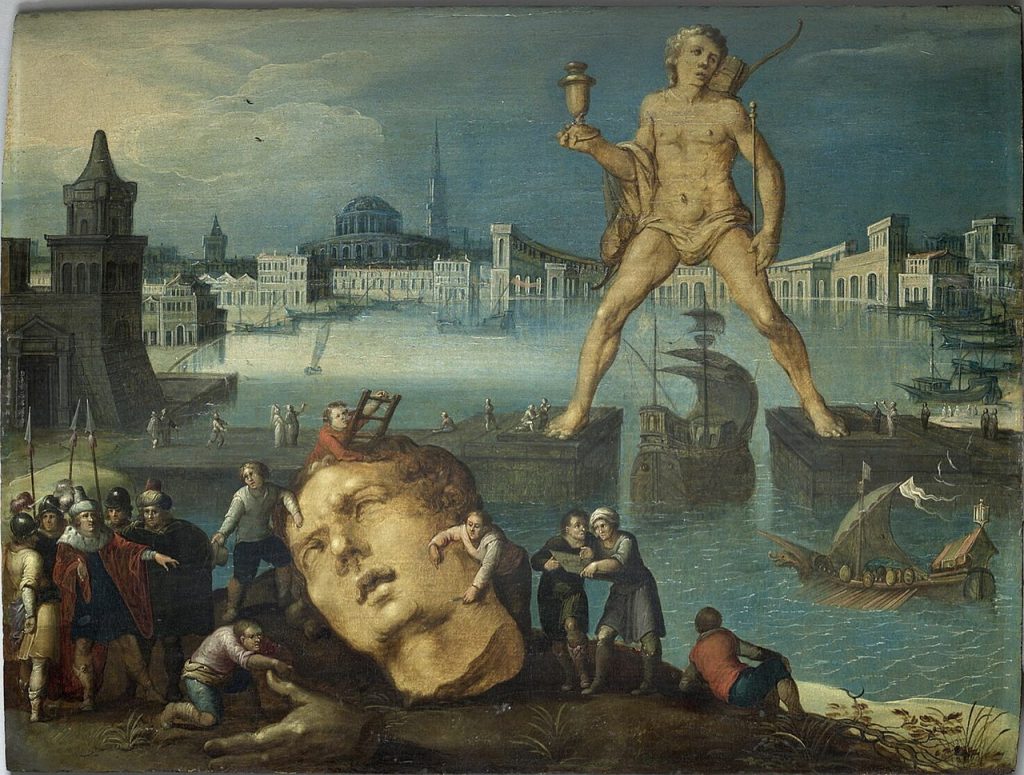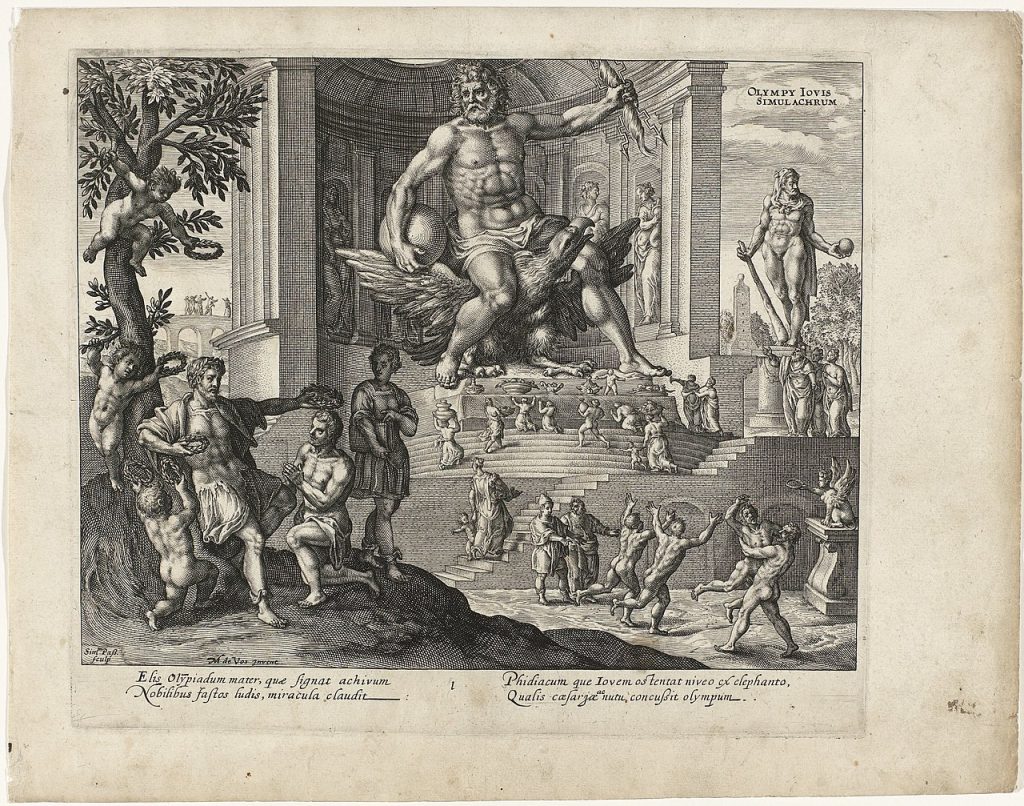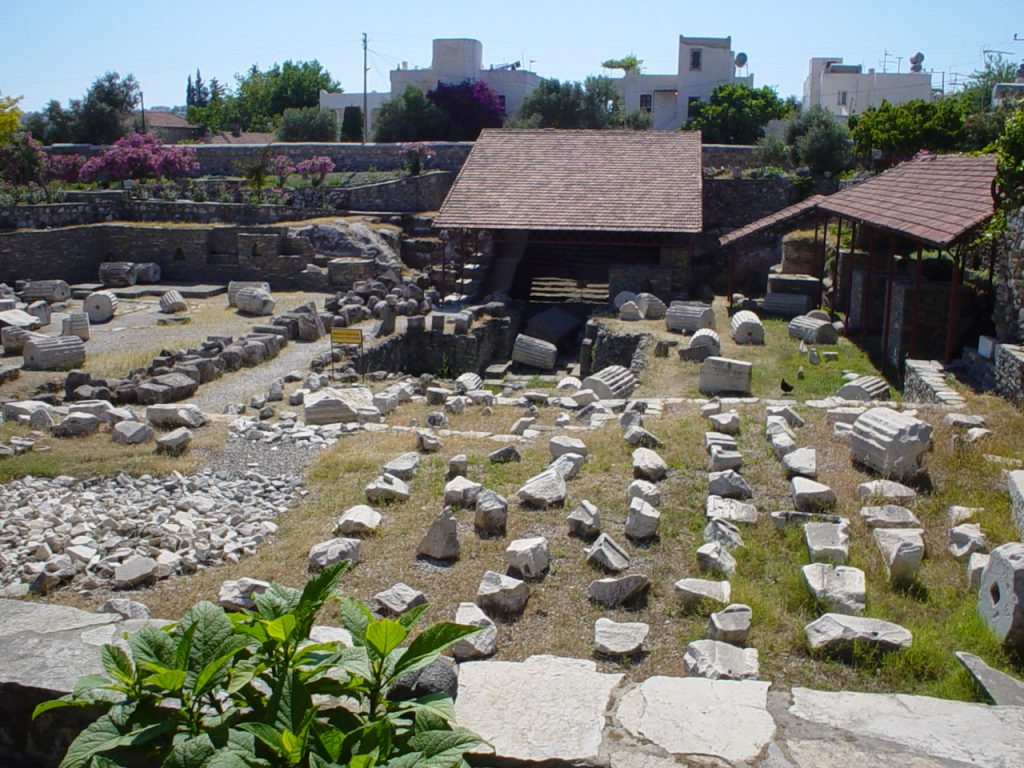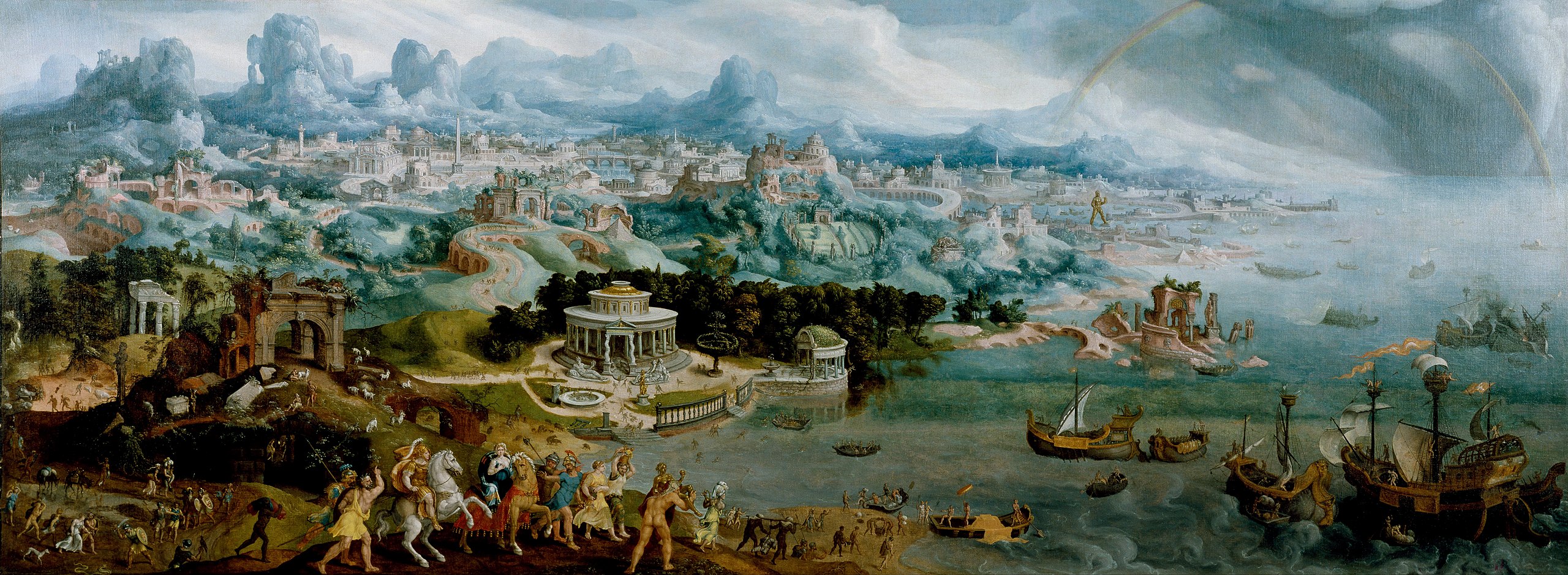 he seven wonders of the ancient world were a testament to the grandeur and ingenuity of some of the most powerful civilizations in history. From the Colossus of Rhodes to the Mausoleum of Halicarnassus, these monuments were both awe-inspiring and influential in their time. Over time, however, many of them have been destroyed or lost to time. In this article, we will explore what happened to each wonder and examine their legacy today. We’ll also delve into why these monuments were so important in their respective cultures and how they’ve continued to shape our view of the past.
he seven wonders of the ancient world were a testament to the grandeur and ingenuity of some of the most powerful civilizations in history. From the Colossus of Rhodes to the Mausoleum of Halicarnassus, these monuments were both awe-inspiring and influential in their time. Over time, however, many of them have been destroyed or lost to time. In this article, we will explore what happened to each wonder and examine their legacy today. We’ll also delve into why these monuments were so important in their respective cultures and how they’ve continued to shape our view of the past.
The seven wonders of the ancient world are some of the most awe-inspiring structures ever constructed. They were originally listed by Philon of Byzantium in 225 BC, and since then have been a source of fascination and admiration. The list has changed over time, but the original seven wonders included the Colossus of Rhodes, the Hanging Gardens of Babylon, the Lighthouse at Alexandria, the Statue of Zeus at Olympia, the Great Pyramid of Giza, and the Mausoleum at Halicarnassus.
These monuments were considered to be among some of the most impressive structures and monuments of their time for their size, complexity, grandeur and beauty. Their construction was seen as a testament to power and greatness of their respective civilizations and an indication that they had achieved something remarkable.
Today however, many of these wonders are no longer standing due to natural disasters such as earthquakes or floods; war between nations; or simply neglect over time. Despite this destruction however, their legacy lives on in our culture today – inspiring generations with tales that evoke a sense of wonderment and amazement.
1. The Colossus of Rhodes

The Colossus of Rhodes was an awe-inspiring monument built by Chares of Lindos in 280 BCE. Standing at an impressive 33 metres (108 feet) tall, it was the tallest statue of the ancient world and a symbol of pride for the people of Rhodes. It depicted Helios, the Titan god of sun, and was said to be visible from miles away. Despite its grandeur and importance, it was destroyed in 226 BCE by an earthquake and its remains were eventually sold off as scrap metal.
Although the Colossus no longer stands today, it is remembered as one of the Seven Wonders of the Ancient World and a testament to the grandeur and power of ancient civilizations. Its legacy lives on through literature, art, and popular culture – a reminder that even though monuments may be lost over time, their memory will remain immortalized in our collective cultural consciousness.
The Colossus has come to represent resilience in many ways; its destruction did not mark its end but rather allowed for new beginnings. Even after 2 millennia since its demise, people around the world still remember this monumental structure as a reminder that greatness can arise out of tragedy. In this way, we can continue to learn from history’s lessons while looking forward to a brighter future.
2. The Hanging Gardens of Babylon

The Hanging Gardens of Babylon are a stunning testament to the ingenuity and ambition of mankind. Built by King Nebuchadnezzar II around 600 BCE, the gardens were said to be located near modern-day Baghdad, Iraq and were constructed as a gift for his beloved wife Queen Amytis. It is believed that an intricate system of pumps and waterwheels was used to irrigate the terraced gardens from the Euphrates river—allowing lush greenery and vibrant flowers to flourish in an otherwise arid desert landscape.
This impressive feat earned them a place among the Seven Wonders of the Ancient World; however, despite numerous attempts there has been no archaeological evidence found to confirm their existence or exact location. This has led some scholars to believe that it may simply have been a mythical construct. Nevertheless, this awe-inspiring achievement continues to live on in literature, art, and popular culture—reminding us all of humanity’s capacity for grandeur despite tragedy.
3. The Lighthouse at Alexandria

The Lighthouse at Alexandria was an impressive feat of engineering that stood tall for hundreds of years in ancient Egypt. Also known as the Pharos of Alexandria, it was one of the Seven Wonders of the Ancient World and served as a beacon for ships navigating the Mediterranean Sea. The lighthouse itself was a three-tiered structure built from marble and limestone, standing at over 400 feet in height. It was constructed by Ptolemy I Soter around 280 BC and featured an impressive array of mirrors and lenses to reflect sunlight during the day, while at night it was illuminated with a fire burning atop its tower.
Sadly, despite its grandeur, several earthquakes in 1303 and 1323 AD destroyed the lighthouse completely, leaving behind only remnants which were discovered in 1994. Although some have suggested rebuilding this ancient wonder, there are currently no plans to do so.
Despite its destruction, the legacy of the Lighthouse at Alexandria lives on today. It has come to symbolize ambition and human ingenuity, inspiring scientists and engineers to push boundaries even further in search of new heights. Its influence can be seen throughout history – from lighthouses along coastal regions around the world to modern-day skyscrapers reaching ever higher into the sky. Through these accomplishments we can continue to marvel at this ancient wonder’s grandeur and power even today.
4. Statue of Zeus at Olympia

The Statue of Zeus at Olympia was a remarkable work of art crafted by the renowned sculptor Phidias. He made it with gold and ivory, standing 43 feet tall, depicting Zeus seated on his throne with a scepter in one hand and Nike, goddess of victory, in the other. This statue was built to honor Zeus’s reign as king of gods and men, serving as an emblem for Olympia during religious festivals like the Olympic games – becoming an iconic symbol throughout Greece.
Sadly, the statue was destroyed by fire in 425 AD. But even though nothing remains today from this monument, its influence still lingers on centuries later through art and culture. For example Michelangelo’s David sculpture is said to have taken inspiration from it while Homer’s Iliad and Odyssey feature its image prominently – used by athletes all over the world as a reminder of their strength and success. It continues to be seen as a symbol for power, ambition and resilience – qualities that still drive us towards greatness long after its destruction.
Though this statue may no longer exist physically in our world today, it has left an imprint behind that will never be forgotten or erased from history. We can look back on these moments with admiration but also look forward to new heights yet to be achieved – just like many other monuments from antiquity lost due to natural disasters or human interference. Ultimately this serves as a reminder that great things can come out even when tragedy strikes us hard.
5. Great Pyramid of Giza

The Great Pyramid of Giza is the only one of the Seven Wonders to still stand today. Built in 2560 BCE, this remarkable structure stands at 481 feet (146.7 meters) tall and is made up of 144,000 limestone blocks. It was estimated to weigh 6 million tons and constructed as a tomb for Pharaoh Khufu, making it the oldest and largest of the three pyramids at Giza plateau.
For 3,800 years, the Great Pyramid of Giza was the tallest structure in the world until its reign was overtaken by Paris’s Eiffel Tower in 1889. As such, it serves as a lasting testament to human ingenuity and ambition throughout history. For centuries it has captivated visitors from around the world with its majestic size and grandeur – many have tried to unravel its mysteries but none have been able to decode its secrets completely.
The pyramid’s design includes several unique features such as an internal air-shaft system which directs air from outside into inside chambers and a circular base which is thought to be connected with ancient Egyptian astronomical calculations. The four sides are almost perfectly aligned facing north, south, east and west respectively and are also thought to be related to astronomical alignments based on stellar configurations during that time period.
Today, the Great Pyramid remains a powerful symbol of ancient civilizations’ grandeur and power – even after thousands of years since its construction it continues to astound us with its complexity and sophistication. Its legacy lives on through literature, art, architecture, culture – reminding us never stop reaching for new heights or dreaming big no matter how long ago our dreams were born.
6. Mausoleum at Halicarnassus

The Mausoleum of Halicarnassus is a majestic edifice that was erected in 350 BC to honor King Mausolus. Built from granite and marble, this monumental architectural structure stands 45 meters high and is artfully adorned with intricate sculptures. From afar, it is said to be an awe-inspiring sight; boasting 36 columns on each side, a pyramid shaped roof and four levels of sculpture depicting scenes from Greek mythology.
Within the walls of the mausoleum are two tombs – one for the king himself and another for his wife Artemisia II. The walls are further decorated with elaborate paintings that portray their life together as well as stories from Greek mythology. Not only was the mausoleum beautiful to behold, but it also served as an important cultural center – scholars came from all over to study its architecture and sculptures.
Unfortunately, in 1494 AD an earthquake brought much destruction down upon the building; today only ruins remain standing. Although much of its artwork has been scattered across the globe, some pieces can still be found in museums such as the British Museum in London. Despite this tragedy however, what remains is no less remarkable; it now serves as a popular tourist attraction where visitors can explore its ruins and appreciate its beauty first hand.
The Mausoleum at Halicarnassus symbolizes hope even when faced with adversity; it serves as an eternal reminder of human ambition and inventiveness that has inspired many throughout history to reach greater heights despite suffering great losses.
7. Temple of Artemis at Ephesus

The Temple of Artemis at Ephesus was one of the Seven Wonders of the Ancient World and was located in the ancient Greek city of Ephesus, which is now in modern-day Turkey. The temple was dedicated to the Greek goddess Artemis, who was worshipped as a fertility goddess and protector of women and children.
The temple was originally built in the 8th century BC, but it was destroyed and rebuilt multiple times throughout its history. The most famous version of the temple was built during the 4th century BC and was one of the largest temples of the ancient world, measuring approximately 377 feet long by 180 feet wide. It was supported by over 100 marble columns, each standing over 60 feet tall.
The temple was a major center of worship and pilgrimage, attracting visitors from all over the Mediterranean world. It was also a hub of commerce, with merchants selling goods and offerings to the temple-goers. The temple’s wealth and importance made it a target for looting and destruction over the centuries, and it was finally destroyed by the Goths in the 3rd century AD.
Today, only a few ruins remain of the once-great temple, but it remains an important historical and cultural landmark, and a popular tourist destination.
Avid Writer with invaluable knowledge of Humanity!
Upcoming historian with over 30 million views online.
“You make your own life.”





